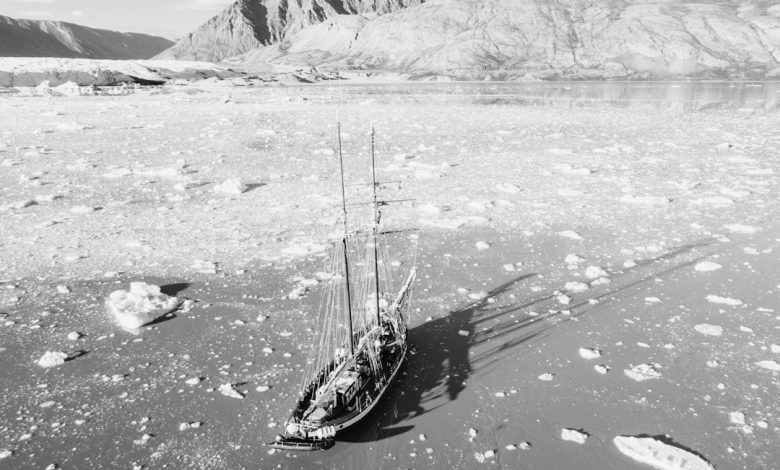What was the purpose of Grandis Expedition 33?

The Grandis Expedition 33, launched in late 2023, was a carefully orchestrated scientific mission that aimed to deepen humanity’s understanding of the rapidly changing climate systems in the polar regions. Spearheaded by an international consortium of environmental research institutions, this expedition ventured into the heart of the Arctic Circle with a precise goal: to study microbial ecosystems under ice sheets and evaluate their impact on global carbon cycles. The data from this mission has since played a pivotal role in assessing future climate models and potential policy adjustments necessary to mitigate environmental collapse.
Understanding the Mission’s Framework
Expedition 33 was built on the lessons and scientific advancements of prior Grandis missions. While earlier ventures focused on geological and oceanographic phenomena, this iteration combined advanced biological sampling methods with remote sensing technologies to address questions about microorganisms’ roles in Earth’s climate regulation mechanisms.
The main components of the mission included:
- Microscopic Life Inventory – Documenting and classifying microorganisms living beneath ice sheets.
- Gas Exchange Monitoring – Measuring emissions such as methane and carbon dioxide from sub-glacial melt zones.
- Glacial Dynamics Observation – Observing how microbial activity influences glacial movement and structural changes.
- Model Integration – Feeding field data into global climate models in real time via satellite communications.
Scientific Teams and International Collaboration
One of the mission’s most impressive features was the unprecedented level of international cooperation. Over 160 researchers from 12 countries participated, combining the expertise of microbiologists, climatologists, geologists, and data scientists. Distinguished institutions such as the Arctic Research Institute of Canada, Norway’s Polar Innovation Council, and the Global Climate Modelling Consortium contributed equipment and personnel for this high-stakes voyage.
In addition to field data collection, the mission served an educational and diplomatic purpose. It encouraged global dialogue on environmental stewardship through data-sharing agreements and joint publications.
[ai-img]arctic researchers, glacial expedition, scientific instruments[/ai-img]Key Findings and Advances
The mission yielded several groundbreaking discoveries that have since impacted climate research:
- Unprecedented Microbial Diversity: Over 280 new microbial species were discovered, many of which demonstrated metabolic pathways unknown in current scientific literature.
- Carbon Sink Capabilities: Contrary to prior understanding, several sub-glacial microbial communities were found to actively consume methane, indicating the possibility of natural carbon mitigation mechanisms.
- Feedback Loops Identified: The team identified three major feedback loops wherein microbial gas emissions accelerated glacial melt, which in turn expanded habitats for these microbes—exacerbating climate warming.
Technology Deployment
Grandis Expedition 33 marked a technological milestone in polar research logistics. The introduction of autonomous drilling pods equipped with miniaturized laboratories allowed for around-the-clock microbial sampling, even during periods of intense weather and low visibility.
Moreover, drone surveillance and satellite-linked data relays minimized the need for repeat expeditions by transmitting critical data to research facilities worldwide in near real-time. This minimized the mission’s carbon footprint while maximizing output.
Environmental and Policy Implications
Perhaps the most impactful dimension of Grandis Expedition 33 was its influence on policy frameworks. The United Nations Environmental Programme (UNEP) cited the expedition’s findings during climate summits, advocating for:
- Expanded protection zones in Arctic and Antarctic territories.
- Increased funding for microbial climate research.
- Reassessment of industrial activities near polar research zones.
Additionally, discussions are underway about integrating microbial ecosystem data into IPCC assessment reports, acknowledging that these organisms play a more active role in climate evolution than previously understood.
Conclusion
The purpose of Grandis Expedition 33 extended far beyond mere scientific inquiry—it represented a holistic step toward uniting science, technology, and diplomacy in response to one of the greatest challenges facing humanity: climate change. While much work remains, the expedition deepened our understanding of planetary dynamics and offered a promising path forward for integrating microscopic insights into macroscopic climate models.
As preparations begin for Expedition 34, the legacy of Grandis 33 stands as a testament to what can be achieved when nations collaborate in pursuit of truth and preservation.



